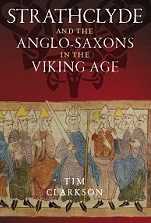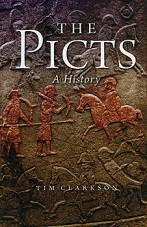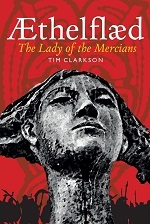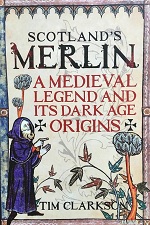
A number of the early medieval cross-slabs at Govan were re-used as tombstones by local families in the seventeenth and eighteenth centuries. They were usually carved with the initials of the deceased and, in some cases, with the date of death. This kind of re-use inevitably damaged the carved patterns from ancient times.
One of the re-used slabs has a rounded end which forms a curving arch around the head of the cross. Within the arched space is a post-medieval inscription: BELLIY HOUSTONS. Although no initials or date are visible, this stone was almost certainly re-used by the Rowans, an old Govan family whose residences included the Bellahouston estate on a road leading out to Paisley. Members of the Rowan family were very prominent in the local community at Govan from the 1600s onwards, right through to the nineteenth century. They played leading roles in important institutions such as the parish church (known today as Govan Old) and the Govan Weavers Society.
The date of the inscription is unknown but it was probably carved after 1726. In that year, the Bellahouston estate came into the possession of the Rowans when James Rowan of Marylands purchased it. The ancient stone at Govan was presumably used as a memorial for this branch of the family, perhaps marking the grave of James himself. The original decoration on the stone, comprising a cross with interlace patterns, was probably carved in the tenth century. A detailed description appears in The Early Christian Monuments of Scotland (ECMS), a magisterial survey of Dark Age sculpture published in 1903:
‘On the cross a three-cord plait, double-beaded. On the background of the cross (above the top arm) the modern inscription BELLIY HOUSTONS; (on each side of the arm) a three-cord plait; (on the left of the shaft) a chain of rings with bands passed through them at right angles, double-beaded; (on the right of the shaft) a four-cord (?) plait, double-beaded; and (below the bottom of the shaft) triangular interlaced work No.732, double-beaded.’
ECMS included illustrations of some of the Govan cross-slabs but not the Bellahouston stone. The illustrations were reproduced from photographs in Sir John Stirling Maxwell’s Sculptured Stones in the Kirkyard of Govan (1899) which included the entire Govan collection. Interestingly, the images in Sir John’s book didn’t depict the actual monuments but plaster casts of them. The picture below shows the cast of the Bellahouston Stone alongside Sir John’s map of the kirkyard, on which I’ve marked the slab’s nineteenth-century location.

Defacing ancient sculpture would now be considered an act of vandalism or, to give it a modern label, a ‘heritage crime’. Three hundred years ago, the Rowan family and their contemporaries would have taken a different view, one which was neatly explained by Catherine Cutmore in her study of the Govan gravestones:
‘The re-use of sites and monuments is a very ancient custom. People can draw on the power of the past and ancient rights in order to maintain their own power, especially in times of social stress. Monuments can be used in a similar way. They are visible evidence of earlier people and earlier power. ….The re-use of the older monuments was an effective way of expressing ancient ties to the land and emphasising status.’
* * * * *
Notes
The name ‘Bellahouston Stone’ has been coined by me as a convenient header for this blogpost. The cross-slab is simply designated ‘Govan No.6’ in ECMS and ‘No.24’ by Sir John Stirling Maxwell. I think ‘Bellahouston Stone’ sounds less anonymous. It gives the slab a bit of individuality, like the names given to some Pictish stones.
Reference: Cutmore, Catherine An Archaeological Study of the Memorial Stones in the Kirkyard of Govan Old Parish Church. Society of Friends of Govan Old Annual Report (1997)
* * * * * * *







